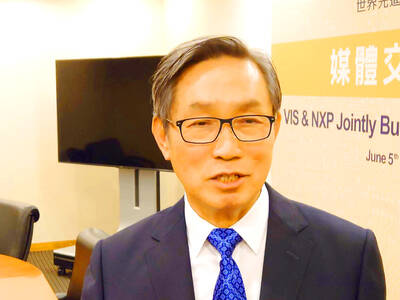Shin Kong Financial Holding Co (
The investment would be completed by the end of this quarter and was expected to improve Shin Kong Bank's (新光銀行) capital adequacy ratio to 11.84 percent, according to the filing.
Shin Kong Financial expects its banking arm to rake in NT$8 million in the fourth quarter and another NT$161 million next year as a result of the fund injection, it said.
The capital came from the funds the company raised through the issuance of US$250 million of European convertible bonds last December, which was earmarked for acquisition purposes, the company said.
The company may use the funds to help refinance high-cost debt incurred in last year's acquisition of Macoto Bank (
However, the financial group was later forced to change the declared purpose of the funds as a result of the staggered consolidation of the nation's financial sector following protests from unions linked to state-run lenders such as Taiwan Business Bank (台灣企銀), the company said in the statement.
Shin Kong Financial said it planned to use the remaining NT$4.57 billion to acquire rivals such as MasterLink Securities Corp (
Shin Kong said it would acquire MasterLink shares on the open market and the two companies reportedly expressed strong interest in a partnership after the chairman of Shin Kong Financial, Eugene Wu (
Shin Kong Financial reported earnings of NT$5.88 billion, or NT$1.36 per share, for the first half of this year. Shares of Shin Kong dropped 1.8 percent to close at NT$18.7 yesterday.

TARIFFS: The global ‘panic atmosphere remains strong,’ and foreign investors have continued to sell their holdings since the start of the year, the Ministry of Finance said The government yesterday authorized the activation of its NT$500 billion (US$15.15 billion) National Stabilization Fund (NSF) to prop up the local stock market after two days of sharp falls in reaction to US President Donald Trump’s new import tariffs. The Ministry of Finance said in a statement after the market close that the steering committee of the fund had been given the go-ahead to intervene in the market to bolster Taiwanese shares in a time of crisis. The fund has been authorized to use its assets “to carry out market stabilization tasks as appropriate to maintain the stability of Taiwan’s

STEEP DECLINE: Yesterday’s drop was the third-steepest in its history, the steepest being Monday’s drop in the wake of the tariff announcement on Wednesday last week Taiwanese stocks continued their heavy sell-off yesterday, as concerns over US tariffs and unwinding of leveraged bets weighed on the market. The benchmark TAIEX plunged 1,068.19 points, or 5.79 percent, to 17,391.76, notching the biggest drop among Asian peers as it hit a 15-month low. The decline came even after the government on late Tuesday authorized the NT$500 billion (US$15.2 billion) National Stabilization Fund (國安基金) to step in to buoy the market amid investors’ worries over tariffs imposed by US President Donald Trump. Yesterday’s decline was the third-steepest in its history, trailing only the declines of 2,065.87 points on Monday and

TARIFF CONCERNS: The chipmaker cited global uncertainty from US tariffs and a weakening economic outlook, but said its Singapore expansion remains on track Vanguard International Semiconductor Corp (世界先進), a foundry service provider specializing in producing power management and display driver chips, yesterday withdrew its full-year revenue projection of moderate growth for this year, as escalating US tariff tensions raised uncertainty and concern about a potential economic recession. The Hsinchu-based chipmaker in February said revenues this year would grow mildly from last year based on improving supply chain inventory levels and market demand. At the time, it also anticipated gradual quarter revenue growth. However, the US’ sweeping tariff policy has upended the industry’s supply chains and weakened economic prospects for the world economy, it said. “Now

An employment discrimination lawsuit against contract chipmaker Taiwan Semiconductor Manufacturing Co (TSMC, 台積電) might soon be expanded after a hearing in a federal court in San Jose, California, on Tuesday to add 15 plaintiffs to the case. According to a court document, the lawsuit, which was refiled in November last year as a form of a class action with 13 plaintiffs in California, wants to add 15 plaintiffs from Arizona, where TSMC is building up its wafer fab capacity. TSMC first committed between 2020 and last year to invest US$65 billion in three advanced wafer fabs in Arizona. It then pledged an